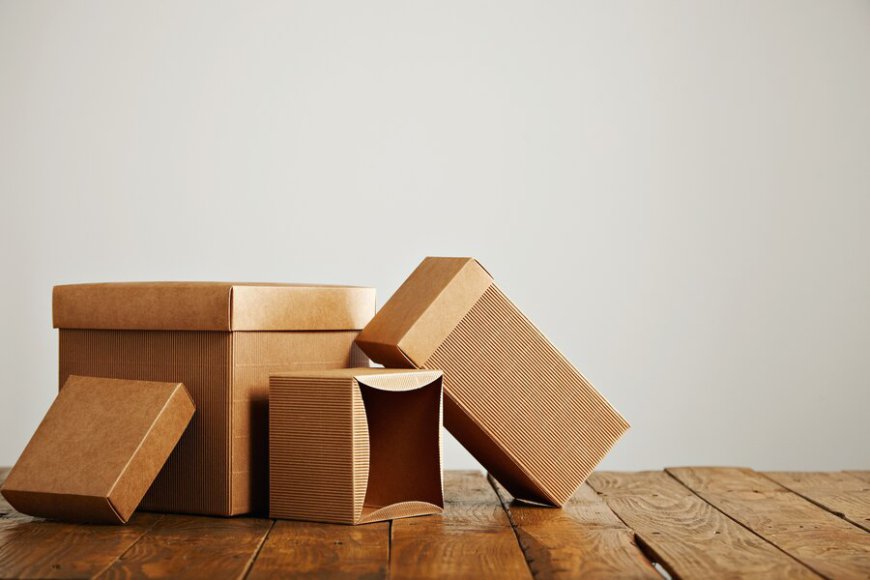Sustainable Forestry Practices And Corrugated Cardboard
Sustainable forestry ensures a steady supply of raw materials for the corrugated cardboard industry while protecting the environment.

Creased cardboard boxes. We see them all over, from supermarkets to our doorsteps after a delightful web-based shopping binge. However, have you at any point halted to consider the excursion these containers take before contacting you? Everything begins with trees, and the uplifting news is, that the fate of layered cardboard is progressively entwined with maintainable ranger service rehearses. This blog entry jumps into the universe of custom fast food boxes service and it association with creased cardboard. We'll investigate how dependable backwoods the executives guarantee a consistent stock of unrefined components while safeguarding our valuable environments.
The Lifecycle of Corrugated Cardboard
The excursion of a creased cardboard box starts in a timberland. Trees are reaped to make the paper mash that frames the center material of the cardboard. Yet, how these trees are collected improves things significantly:
- Ordinary Ranger service: Conventional logging practices could include clearcutting, where whole segments of wood are taken out. This can upset biological systems, hurt natural life living spaces, and add to soil disintegration.
- Feasible Ranger service: This approach focuses on the mindful backwoods of the executives. Trees are specifically reaped, permitting the backwoods to normally recover. Furthermore, manageable ranger service rehearses elevate establishing new trees to recharge the asset.
Sustainable forestry ensures a steady supply of raw materials for the corrugated cardboard industry while protecting the environment. Here's how:
- Forest Conservation: Sustainable forestry practices aim to maintain healthy forests and their biodiversity. This includes protecting endangered species and preserving natural habitats.
- Reduced Environmental Impact: Capable backwoods the board limits soil disintegration and directs water stream. It additionally adds to fighting environmental change by advancing solid backwoods that retain carbon dioxide.
- Long-Term Sustainability: By zeroing in on woodland reestablishment and capable reaping, feasible ranger service guarantees a nonstop stock of trees for the layered cardboard industry, making it a sustainable asset.
By embracing supportable ranger service rehearses, the ridged cardboard industry can limit its ecological impression and add to a better planet.
Certifications and Labels You Can Trust
With regards to picking feasible layered cardboard bundling, search for affirmations and names that check dependable ranger service rehearses: Timberland Stewardship Chamber (FSC): This universally perceived confirmation guarantees that backwoods are overseen as persevere natural and social guidelines. Reasonable Ranger Service Drive (SFI): This North American program advances mindful timberland the board rehearses across the mainland. Program for the Underwriting of Timberland Confirmation (PEFC): This global association sets supportability benchmarks for woodland executives around the world. By picking folded cardboard bundling with these confirmations, you're supporting capable ranger service practices and pursuing a cognizant decision for the climate.
Additional Considerations for Sustainable Corrugated Cardboard
While certifications offer valuable guidance, here are some additional factors to consider when choosing sustainable corrugated cardboard packaging:
- Recycled Content: Opt for corrugated cardboard with a high percentage of recycled paper fibers. This reduces the need for virgin trees and minimizes waste.
- Recyclability: Ensure your corrugated cardboard boxes are easily recyclable in your local recycling program. Look for the recycling symbol on the packaging.
- Minimalist Design: Packaging that uses less material is inherently more sustainable. Consider optimizing your box size and eliminating unnecessary elements.
By incorporating these additional considerations, you can go above and beyond basic certifications and make even more eco-friendly choices with your corrugated cardboard packaging.
Innovation and Sustainability in Corrugated Cardboard
The future of corrugated cardboard is brimming with green potential:
- Biodegradable Materials: Research is underway to develop corrugated cardboard made from fast-growing, renewable materials like bamboo or even seaweed.
- Reduced Material Usage: Advancements in design and engineering might lead to corrugated cardboard boxes that offer the same level of protection with less material, minimizing resource consumption.
- Closed-Loop Recycling: The future might see a more efficient closed-loop system where used corrugated cardboard is recycled back into high-quality packaging material, minimizing waste.
These innovations highlight the corrugated cardboard industry's commitment to sustainability and its dedication to becoming an even more eco-friendly packaging solution.
Conclusion
Creased cardboard, when obtained from reasonably overseen woods, offers a compellingly eco-accommodating bundling choice. By embracing feasible ranger service rehearses, the business guarantees a sustainable asset and adds to sound biological systems. As purchasers, we can all assume a part in advancing supportability by searching for confirmations and pursuing informed decisions about creased cardboard bundling. Keep in mind, that each container you pick with a manageability center is a little step towards a custom burger box future. Thus, the following time you experience a creased cardboard box, pause for a minute to see the value in the excursion it took - from capably overseen woods to your hands - and the positive effect you can make by picking economical bundling choices.

 AhmerSeo
AhmerSeo